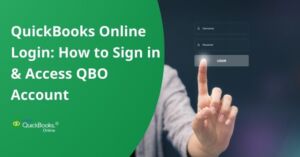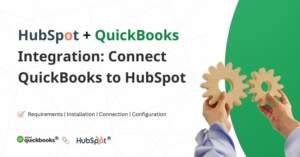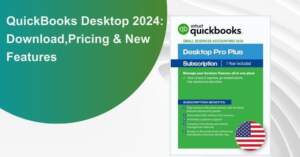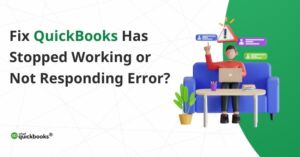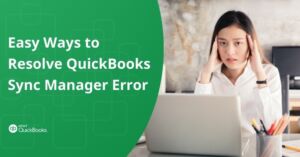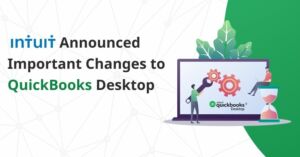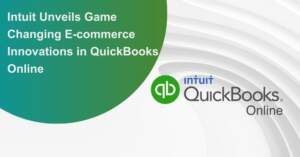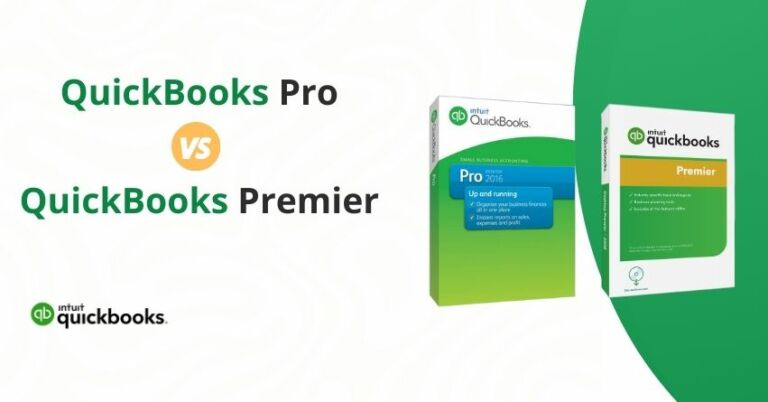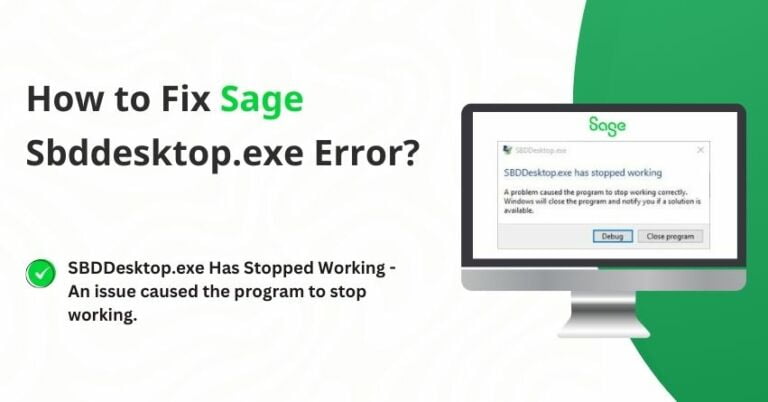Table of Contents
ToggleCash flow is essential for small to medium-sized businesses’ survival. Keeping track of your cash flow keeps your margins right where you need them to be. QuickBooks helps you take control of your small and medium-sized business’s finances by managing cash flow. Think of financial flow like fuel in your car. It fills up and then drains while you drive. Making sure there is always enough fuel in your tank to prevent running out is the goal. In this article, we are going to see how you can manage a positive cash flow in QuickBooks.
What is Cash Flow in QuickBooks?
Cash Flow is the movement of cash and cash equivalents that come in and go out of a company. It helps you to understand the difference between the cash coming into a company and cash going out of the company.
Cash comes in when the customers pay for the products and services provided. Cash goes out in the form of payment for day-to-day business expenses.
Types of Cash Flow
The cash flow statement consists of three main types of cash flow sections: financing, investing, and operational cash flows. What you spend the money on or where you acquire it from will determine the sort of cash flow.
1. Financing Cash Flow
- Financing cash flow pertains to the funds you receive from or pay to lenders, investors, or creditors. It includes all monetary exchanges related to debt or equity. Taking a loan, for example, is an inflow; paying off debt or disbursing profits are outflows in this category.
2. Investing Cash Flow
- Investing cash flow includes expenditures on long-term assets such as equipment and the cash generated from selling these assets. Companies intend to use fixed assets, such as vehicles and machinery, for prolonged periods. Acquiring equipment constitutes an outflow in investing cash while selling some fixed assets results in an inflow
3. Operating Cash Flow
- Cash flow from operations, or operating cash flow, comprises money from vital corporate activities like producing or selling goods or services. This comprises income from salaries, inventory purchases, and payments from customers.
- To calculate operating cash flow, you need to consider your net income, non-cash expenses like depreciation, and changes in working capital.
Operating Cash Flow = Net Income + Non-cash Items + Working Capital Changes
- Your current liabilities less your current assets equals your working capital. Accounts receivable, accounts payable, and inventory are accrual accounting items that are adjusted to a cash basis using this formula.
Tips to Manage Cash Flow in QuickBooks
1. Streamline your Invoicing Process:
It’s crucial to have the ability to view your balances and understand how to collect unpaid invoices. QuickBooks simplifies the management of invoices, offering a seamless end-to-end solution. You can effortlessly generate invoices, track, and monitor the status, and send gentle reminders to customers.
2. Reduce Outgoing Expenses:
Reduce recurring expenses on a monthly, quarterly, and yearly basis. Try cutting down on utility bills, rent, payroll, subscriptions, or any extraneous costs. Also, try to break down significant payments to make your monthly cash flow more manageable and predictable.
3. Increase Income:
Think about strategies to boost your income by exploring fresh sales channels, diversifying your product or service offerings, or liquidating assets you no longer require to infuse your finances with a quick cash injection.
4. Expand your Payment Options:
There are numerous factors contributing to unpaid invoices, and one of them is the limited availability of payment methods. Try to be flexible when it comes to accepting payments. Start accepting the checks and PayNow payments, along with credit and debit card payment options.
5. Consider your Borrowing Options:
Infusing capital into your business through borrowing is another way to enhance your cash flow. Consult your existing financial service provider to explore the options they can provide to assist you in overcoming cash shortages. However, it’s crucial to calculate the interest expenses to ensure they align with your business budget.
6. Negotiate Accounts Payable:
Engaging in negotiations regarding payment terms with suppliers or other entities you owe money to can assist in distributing your cash flow more evenly. By having greater working capital at your disposal, you can prioritize your essential expenses and prevent minor cash flow challenges from escalating into significant problems.
7. Customize and Automate your Financial Reports:
Business owners should have a grasp of several critical accounting reports. Examples of these include profit and loss statements and balance sheets, both of which should be reviewed and understood regularly to gain insight into your cash situation.
to resolve your query in no-time.
What does a Good Cash Flow look like?
The amount of available cash in your business account varies according to the type of business you own. Hence, cash flow statements also vary with every business type. But, three general indicators indicate your cash flow is in a healthy position:
- Record positive Cash Flow from operating activities: The very first prerequisite of a positive Cash Flow is the ability of the business to generate more cash than it spends. Consistently expanding your net cash flow over time should be the central focus of your business’s core operations.
- Your customers’ payments are prompt: Delayed payments often disrupt a healthy cash flow, leading business owners to bear avoidable costs like overdraft fees and credit card interest during times when cash reserves are insufficient. Effective cash flow management includes the timely pursuit of invoices, whether through manual follow-ups or automated payment reminders facilitated by accounting software such as QuickBooks.
- Your investments are funded by cash, not financing: While a positive net cash flow from financing activities can be essential for business expansion, it should be the exception rather than the norm. Utilizing cash for expansion signifies that the company is effectively and profitably managing its day-to-day operations, thereby eliminating the necessity for obtaining new loans. In essence, this reassures investors that the business’s foundational strengths are robust enough to self-fund its growth, rather than depending on borrowing, asset sales, or fundraising.
Cash Flow Hub for QuickBooks Desktop
The success of your company depends on efficient cash flow management. With real-time insights into your company’s current cash status, Cash Flow Hub offers a comprehensive solution. You can effectively analyze and improve your cash flow with its help.
Step 1: Log into Cash Flow Hub
- Click Cash Flow Hub after selecting your company.
- Alternatively, the shortcut sidebar on the home page allows you to open Cash Flow Hub immediately.
Optional: Set up Accounts
- It will automatically display several accounts from your chart of accounts.
- You can add or remove accounts by clicking on Manage accounts, keeping in mind that every business is different. Accounts that have a big influence on your cash flow should be included.
Note: Your linked bank feed accounts’ current balances are displayed to you. We provide support for Discover, Capital One, Bank of America, Chase (First USA, Bank One, CardMember Services), and numerous more institutions that use Direct Connect.
Step 2: Use the Cash Flow Hub
1. All Accounts
To enhance business performance, monitor cash levels using the All Accounts section.
2. Money In
Comprises all of the ways that your company gets paid, including credit memos as well as invoices, sales receipts, and other receivable payment activity.
These are divided into two categories: Paid and Upcoming. Suggestions for steps to maintain a healthy cash flow are provided for each line item.
3. Money Out
Shows business expenses, such as vendor invoices and payroll that are either Paid or Coming. Additionally, the transactions offer recommended courses of action for thought.
4. Cash Flow Trend
The cash flow trend chart gives you a broad picture of your cash flow by showing the money coming in and going out of your company. The total bank balances for all accounts are displayed graphically in this way. Move your cursor over the nodes to see the closing balances and the total amount coming in or going out for the chosen time frame.
Note: Instead of online balances, this makes use of the reconciled transactions that are stored in QuickBooks.
Your bank accounts, which are included in the Cash Flow Hub’s All Accounts section, provide verifiable historical data that is used in the cash flow chart.
Please note that the chart excludes:
- Credit card transactions.
- Loan accounts.
- Multi-currency transactions.
Note: The data for an account will no longer be displayed on the chart if it is removed from the list of all accounts.
Conclusion
Effectively managing cash flow requires constant vigilance over your business’s financial health. Countless businesses have adopted accounting software to meticulously track the movement of money in and out of their operations. You should take a similar approach for your small business to medium-sized business.
Utilizing financial reporting and cash flow projections can be a game-changer for your small business and medium-sized business. This valuable knowledge can equip you to anticipate and navigate the inevitable peaks and valleys in your cash flow.
If you are seeking professional help, then please get in touch with our QuickBooks assistance team at +1-855-875-1223 (Toll-Free) & speak to the Certified QuickBooks ProAdvisor Team.
Frequently Asked Questions (FAQs)
Tips and Solutions for managing a healthy Cash Flow in a company
1. Prepare in advance and identify business risks.
2. Make a different bank account for your business.
3. Effectively keep track of your inventory.
4. Always keep some buffer money.
5. Come up with a system to manage your cash flow.
6. Cust costs and control your cash outflows.
If you are using QuickBooks Desktop Premier, Accountant, or Enterprise, you have the added capability of generating forecasts to anticipate future revenue and cash flow. You can initiate a financial forecast either from scratch or by using last year’s data.
A cash flow forecast is essentially a projection of your forthcoming sales and expenditures. It provides you with an insight into the anticipated inflow and outflow of funds within your business for a specific timeframe.
The difference between profit and loss and cash flow forecasts lies in the fundamental difference between profits and cash. Profit and loss forecasts represent the amount of money remaining after covering expenses, whereas cash flow forecasts track the net movement of cash both entering and exiting the business. In essence, profit reflects your financial performance on paper, while cash flow reflects the actual cash transactions within your business.
Certainly. Overdue bills are included in the Accounts Receivable Aging Summary report that QuickBooks offers. To better manage overdue payments and cash flow, you can also automate follow-ups and set up payment reminders.
Sure, alarms for low cash levels can be set up. With QuickBooks, you can set up alerts to tell you when your cash balance approaches a given limit, which can help you manage your money more proactively.



